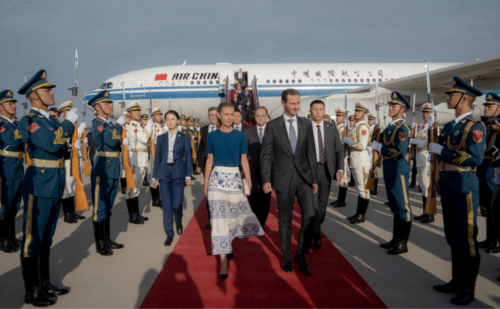Xinjiang’s emerging digital economy includes ‘smart oil fields’
Karamay, a city in northern Xinjiang that was settled in 1955 after the discovery of oil, is now an information hub for China’s western regions, with five data centers and ‘smart oil fields’.

Yesterday, a job fair and recruitment event focused on the internet and IT industry took place in Urumqi, Xinjiang. A total of 150 IT companies participated in the job fair online and offline, and offered more than 1,600 jobs in ecommerce, internet finance, software development, and big data. The job fair, which attracted around 1,100 people and an online audience of 832,000, will continue in various places in Xinjiang until August 10.
The name of Karamay, a city in the north of the Xinjiang Uyghur Autonomous Region, means “black oil” in the Uyghur language, but the city’s population has never been majority Uyghur: According to China’s 2010 census, over 80% of the city’s population is Han Chinese. Karamay sprang up after China’s first large oil field was discovered nearby in 1955, and the region’s oil is now controlled by China National Petroleum Corporation (CNPC) 中国石油天然气集团.
The “oil city” is now also a “cloud city.” Karamay now has five data centers run by several companies and organizations:
- It claims to have created the first “enterprise cloud” platform in Xinjiang for small and medium enterprises (SMEs), and says it is providing cloud services for 2,236 companies.
- The newest data center, the Karamay Carbon and Water Cooling Data Center, which is about to enter service, undertakes artificial intelligence (AI) computing, cloud storage, and film and television animation rendering.
- The Huawei 华为 cloud data center, which supports Karamay’s local government digitization and cloud services, has enabled 96% of the city’s services to be handled online.
- The China Mobile 中国移动 cloud computing and big data center is the largest film and television animation rendering base in China, with a total of 11,000 rendering nodes. This data center has participated in the rendering of more than 3,000 films and animations, making Karamay a core component of the national film and television industry chain.
- A disaster recovery data center supports Xinjiang’s emergency response and disaster recovery capabilities.
- The CNPC 中国石油天然气 oil field data center, launched in 2018, is the product of detailed surveying of the Xinjiang oil fields, and incorporates 80 years of production data and 43,000 data points covering 130,000 square kilometers (50,193 square miles). This data center uses cloud computing to run “smart oil fields” with real-time information on production, drilling status, and maintenance for more than 20,000 oil wells.
The context
Karamay is emerging as a key hub in the Belt and Road Initiative (BRI) and an information exchange center for China’s central and western regions. The cloud computing industry depends on large-scale data centers, of which electricity accounts for more than 50% of operating costs. With electricity priced at less than a third of China’s eastern provinces, Karamay has a particular advantage in this regard.
According to a report just released by Xinjiang University, the scale of Xinjiang’s digital economy in 2021 was 425.57 billion yuan ($63.08 billion), a year-on-year increase of 12.97%, accounting for 27.36% of the Autonomous Region’s GDP:
- There are more than 20,000 companies operating on the Xinjiang cloud.
- According to the Tianyancha 天眼查 business database, there are 265 companies in Xinjiang focused on intelligent manufacturing, an increase of 26.6% from 2012.
- GAC Group 广汽集团, for example, has a smart factory in Xinjiang with robots that can assemble a car in 14 minutes. Xinjiang Tianshan Elevator 新疆天山电梯制造, with its factory using robots for 60% of production, sold more than 300 elevators this year, a record high.
The takeaway
A digital economy is emerging in Xinjiang focused on the “oil city” of Karamay, which is now a key information hub on China’s Belt and Road Initiative.






